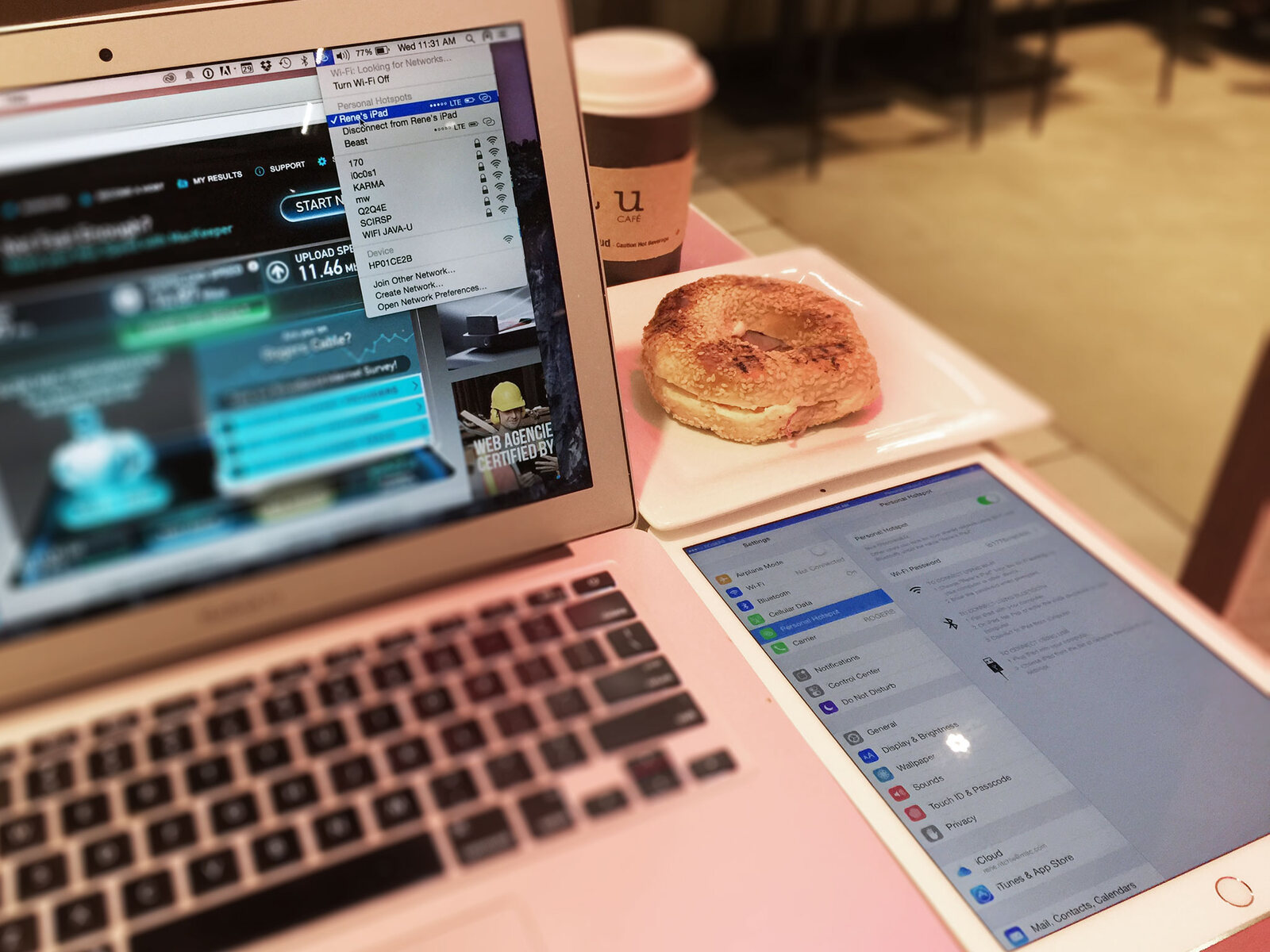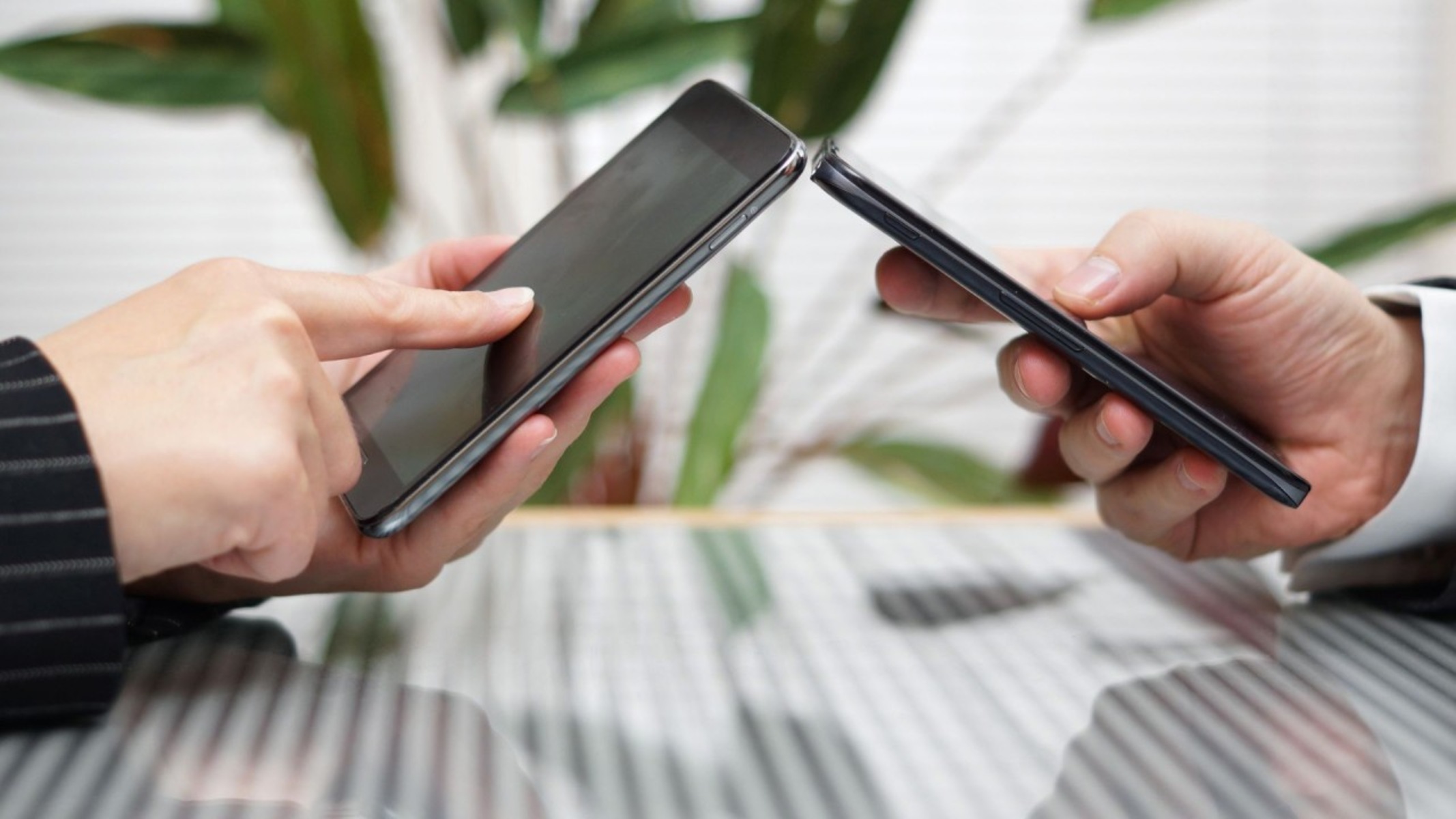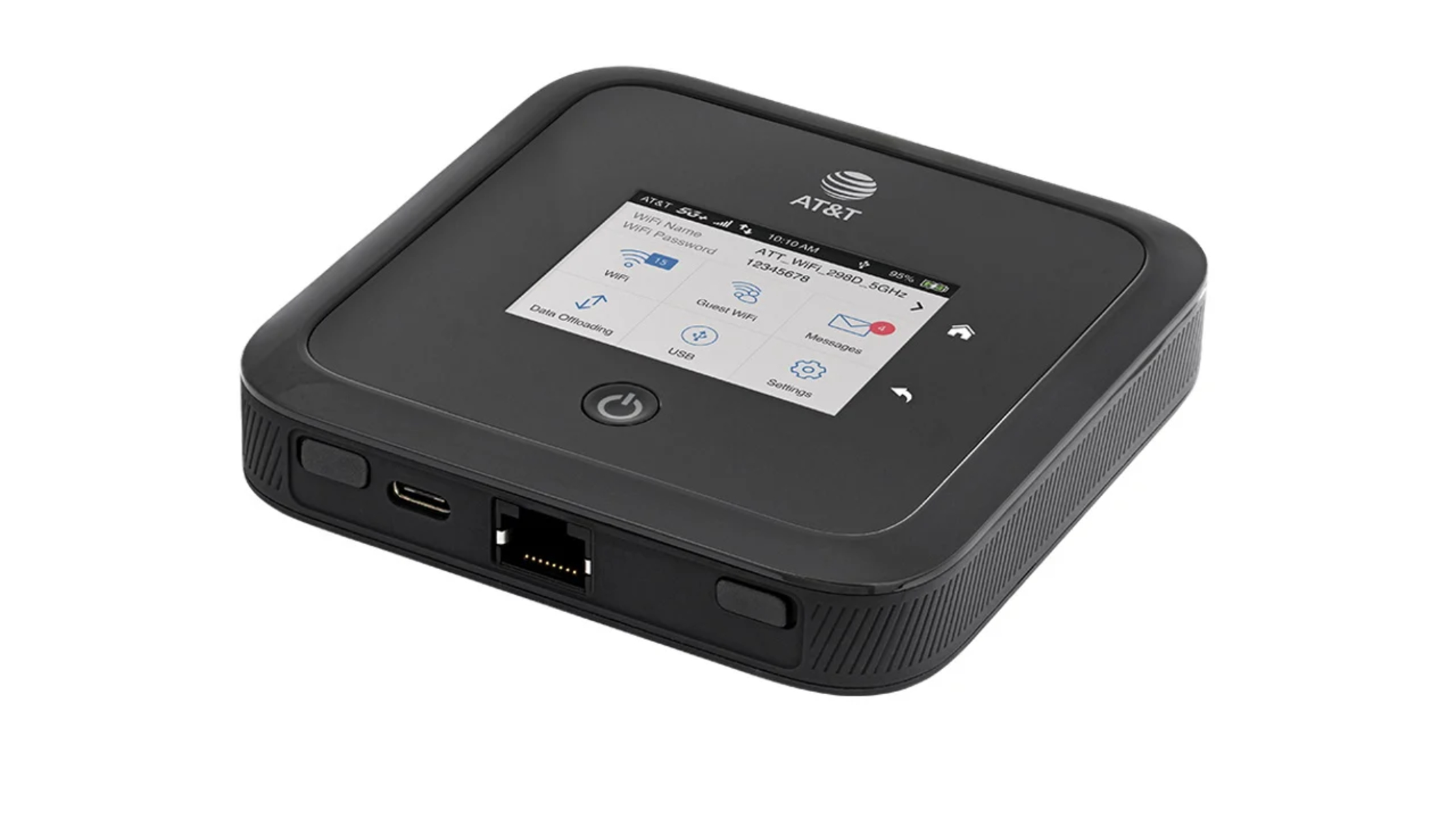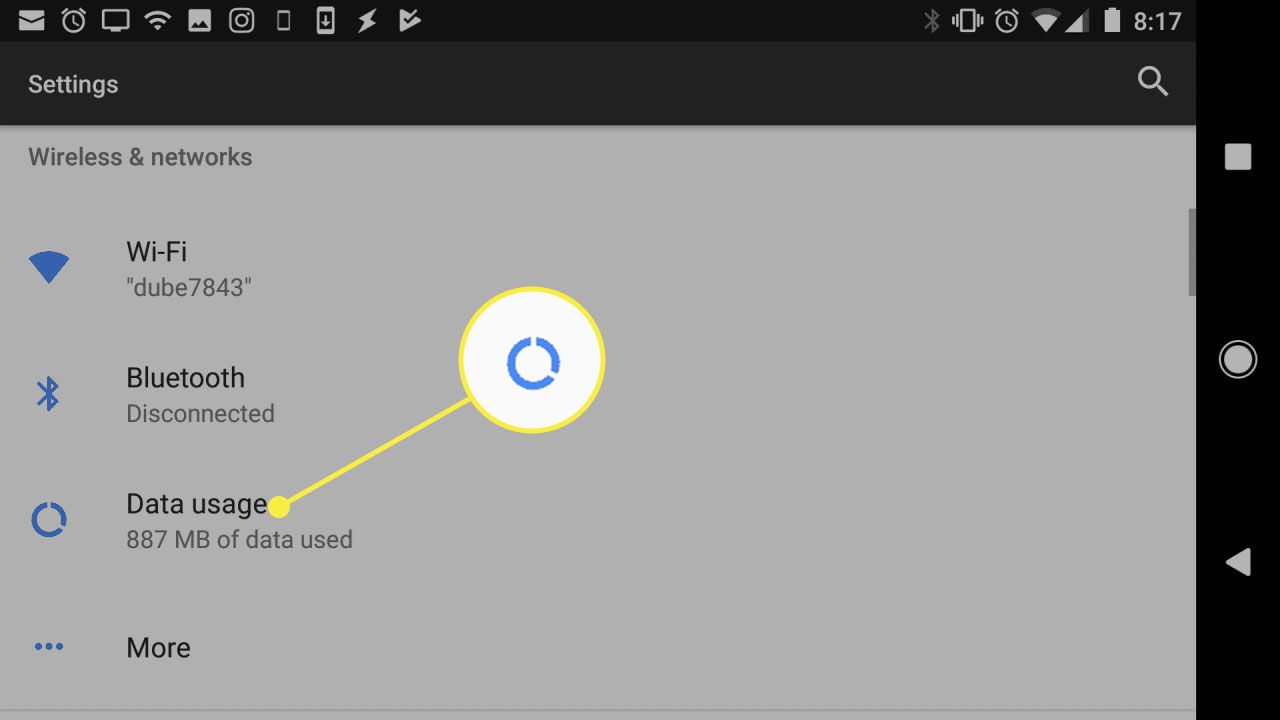Introduction
When it comes to staying connected on the go, USB tethering and mobile hotspots are two popular options that provide internet access to devices such as laptops, tablets, and gaming consoles. Both methods offer the convenience of accessing the internet outside the confines of traditional Wi-Fi networks, making them valuable tools for remote work, travel, and leisure. However, a crucial consideration when choosing between USB tethering and a hotspot is the speed at which they deliver internet connectivity. Understanding the differences in speed performance between these two methods is essential for making an informed decision about which option best suits your needs.
In this article, we will delve into the intricacies of USB tethering and mobile hotspots, exploring their unique features and capabilities. Additionally, we will conduct a comprehensive speed comparison to shed light on the performance disparities between these two methods. By examining the factors that influence speed and connectivity, we aim to equip readers with the knowledge needed to select the most suitable option for their specific requirements. So, let's embark on this journey to unravel the speed disparities between USB tethering and mobile hotspots, empowering you to make well-informed decisions about your internet connectivity needs.
What is USB Tethering?
USB tethering is a method of sharing the internet connection of a mobile device with another device, such as a laptop or desktop computer, using a USB cable. This functionality effectively transforms the mobile device into a modem, allowing the connected device to access the internet through the mobile device's cellular data connection.
To initiate USB tethering, the mobile device and the target device are physically connected using a USB cable. Once connected, the mobile device's internet connection is shared with the target device, enabling seamless access to the internet without the need for a traditional Wi-Fi network.
One of the primary advantages of USB tethering is its simplicity and reliability. Unlike some wireless methods, USB tethering provides a stable and secure connection, making it an ideal solution for individuals who require consistent and uninterrupted internet access for work, study, or recreational activities.
Furthermore, USB tethering is often favored for its efficiency in conserving the mobile device's battery life. Since the connection is established via a physical cable, there is no additional strain on the mobile device's battery, which can be a concern when utilizing wireless hotspot functionalities.
Moreover, USB tethering is known for its ease of setup and configuration. Most modern smartphones support USB tethering, and the process typically involves a few simple steps to activate the feature and establish the connection with the target device.
Overall, USB tethering offers a reliable and straightforward method for sharing a mobile device's internet connection with other devices. Its stability, efficiency in battery usage, and ease of setup make it a compelling option for individuals seeking a dependable means of accessing the internet on their laptops or desktop computers while on the go.
What is a Hotspot?
A hotspot refers to a wireless access point that provides internet connectivity to various devices, typically using Wi-Fi technology. It enables users to access the internet on their laptops, smartphones, tablets, and other Wi-Fi-enabled devices within its coverage area. Hotspots are widely available in public spaces such as cafes, airports, hotels, and libraries, allowing individuals to stay connected while on the move.
The functionality of a hotspot is akin to that of a traditional Wi-Fi router, albeit with a broader scope of accessibility. When activated, a hotspot emits a Wi-Fi signal, creating a localized network through which devices can connect to access the internet. This makes hotspots an invaluable resource for individuals who require internet connectivity outside their homes or offices.
One of the key advantages of hotspots is their versatility and convenience. They offer a flexible solution for accessing the internet in diverse locations, eliminating the need to rely on fixed broadband connections. This mobility makes hotspots an indispensable tool for remote workers, travelers, and anyone seeking internet access while away from conventional Wi-Fi networks.
Hotspots are available in various forms, including dedicated portable devices, smartphones with hotspot capabilities, and integrated features in modern vehicles. These options cater to different user preferences and requirements, ensuring that individuals can choose the most suitable hotspot solution for their specific needs.
Moreover, the accessibility and prevalence of hotspots have been further enhanced by the widespread deployment of 4G and 5G networks. These advanced cellular technologies bolster the speed and reliability of hotspot connections, offering users a seamless internet experience comparable to traditional wired connections.
In essence, hotspots serve as gateways to the digital realm, empowering users to stay connected and productive in a fast-paced, interconnected world. Their ubiquity and adaptability make them indispensable for individuals seeking reliable internet access beyond the confines of fixed locations, reinforcing their status as a cornerstone of modern connectivity.
Speed Comparison
When evaluating the speed performance of USB tethering versus mobile hotspots, it is essential to consider several factors that contribute to their respective capabilities. Both methods harness the power of cellular networks to provide internet connectivity, but their technical implementations and inherent characteristics can lead to divergent speed outcomes.
USB Tethering Speed
USB tethering typically offers a more consistent and reliable speed performance compared to mobile hotspots. This can be attributed to the direct physical connection between the mobile device and the target device, which facilitates a more stable data transfer process. The absence of wireless interference and signal fluctuations often results in a smoother and more predictable internet experience when utilizing USB tethering.
Furthermore, USB tethering leverages the cellular network's bandwidth efficiently, as the connection is channeled directly through the USB cable to the connected device. This direct pathway minimizes potential latency and data transmission hiccups, contributing to a streamlined and responsive internet connection.
Mobile Hotspot Speed
In contrast, the speed performance of mobile hotspots can be influenced by various external factors, including signal strength, network congestion, and the distance between the hotspot device and the connected devices. While modern cellular networks have significantly enhanced the speed capabilities of mobile hotspots, their reliance on wireless transmission introduces potential vulnerabilities to speed fluctuations and connectivity disruptions.
Additionally, the number of connected devices can impact the speed of a mobile hotspot. As more devices share the available bandwidth, the overall speed experienced by individual users may diminish, especially during peak usage periods or in densely populated areas where network congestion is prevalent.
Comparative Analysis
In a head-to-head comparison, USB tethering often exhibits superior speed consistency and reliability, making it an optimal choice for tasks that demand a stable and responsive internet connection, such as video conferencing, online gaming, and large file downloads. On the other hand, mobile hotspots excel in scenarios where flexibility and mobility are paramount, offering internet access to multiple devices within a localized area.
It is important to note that advancements in cellular technology, such as 4G and 5G networks, have significantly narrowed the speed differentials between USB tethering and mobile hotspots. As these networks continue to evolve, the speed disparities between the two methods may further diminish, ultimately benefiting end users with enhanced speed parity and overall connectivity experiences.
In essence, the speed comparison between USB tethering and mobile hotspots underscores the nuanced trade-offs between stability and flexibility, catering to diverse user preferences and situational requirements in the ever-evolving landscape of mobile connectivity.
Factors Affecting Speed
Several key factors play a pivotal role in determining the speed performance of USB tethering and mobile hotspots. Understanding these influential elements is essential for gaining insights into the nuanced dynamics of internet connectivity via cellular networks.
Network Coverage and Signal Strength
The availability of robust network coverage and strong signal strength directly impacts the speed and reliability of both USB tethering and mobile hotspots. A stable and high-quality cellular signal is fundamental for ensuring optimal data transfer rates and minimal latency. In areas with limited coverage or weak signals, the speed performance of both methods may be compromised, leading to slower data transmission and potential connectivity issues.
Cellular Network Technology
The underlying cellular network technology, such as 4G LTE or 5G, significantly influences the speed capabilities of USB tethering and mobile hotspots. Advanced network technologies offer enhanced data transfer speeds and lower latency, translating to improved overall connectivity experiences. As cellular networks continue to evolve, leveraging the latest network technologies can substantially elevate the speed performance of both USB tethering and mobile hotspots.
Device Compatibility and Hardware Specifications
The compatibility of the connected devices and their hardware specifications can impact the speed performance of USB tethering and mobile hotspots. Utilizing devices with outdated or incompatible hardware may restrict the ability to fully harness the speed potential offered by cellular networks. Conversely, modern devices equipped with advanced wireless capabilities and optimized hardware can leverage the full spectrum of speed benefits provided by USB tethering and mobile hotspots.
Network Congestion and Usage Patterns
Network congestion, stemming from a high volume of simultaneous users or data-intensive activities, can exert a notable influence on speed performance. In scenarios where cellular networks experience heightened usage, such as during peak hours or in densely populated areas, the speed of both USB tethering and mobile hotspots may be affected. Understanding and adapting to prevalent usage patterns can aid in managing speed expectations and optimizing connectivity experiences.
Environmental Factors and Interference
The surrounding environment and potential sources of interference, such as physical obstructions and electromagnetic interference, can impact the speed and stability of USB tethering and mobile hotspots. Factors like building materials, geographical terrain, and electronic devices in proximity to the connected devices can introduce variables that affect signal propagation and reception, subsequently influencing speed performance.
In essence, a myriad of interrelated factors, encompassing network characteristics, device attributes, usage dynamics, and environmental variables, collectively shape the speed performance of USB tethering and mobile hotspots. By comprehensively considering these factors, users can proactively optimize their connectivity setups and maximize the speed potential offered by cellular internet access.
Conclusion
In conclusion, the comparison between USB tethering and mobile hotspots elucidates the multifaceted dynamics of speed performance and connectivity nuances inherent in these two popular methods of accessing the internet via cellular networks. The distinct characteristics of USB tethering, characterized by stability, efficiency, and ease of setup, position it as a reliable choice for individuals seeking a consistent and responsive internet connection on their laptops or desktop computers. Conversely, mobile hotspots, with their flexibility, versatility, and broader accessibility, cater to the mobility-centric needs of users requiring internet connectivity across multiple devices within diverse environments.
While USB tethering often exhibits superior speed consistency and reliability, especially in scenarios demanding uninterrupted data transfer and minimal latency, mobile hotspots excel in providing flexible internet access to a multitude of devices within a localized area, making them indispensable for remote work, travel, and leisure activities. The speed comparison between these methods underscores the nuanced trade-offs between stability and flexibility, offering users the opportunity to align their connectivity choices with their specific usage scenarios and preferences.
Moreover, the speed performance of both USB tethering and mobile hotspots is intricately influenced by a constellation of factors, including network coverage, signal strength, cellular network technology, device compatibility, network congestion, and environmental variables. Understanding and navigating these influential elements empower users to optimize their internet connectivity experiences and leverage the full potential of cellular networks.
As cellular technologies continue to advance, with the proliferation of 4G and the emergence of 5G networks, the speed differentials between USB tethering and mobile hotspots may further diminish, ultimately benefiting end users with enhanced speed parity and overall connectivity experiences. The evolving landscape of mobile connectivity promises to deliver increasingly seamless and responsive internet access, blurring the distinctions between USB tethering and mobile hotspots in terms of speed performance.
In essence, the choice between USB tethering and mobile hotspots hinges on a delicate balance between stability and flexibility, catering to diverse user preferences and situational requirements. By weighing the speed disparities, inherent characteristics, and influential factors, individuals can make informed decisions to align their internet connectivity solutions with their unique needs, ensuring optimal speed performance and a seamless digital experience in an ever-connected world.

























